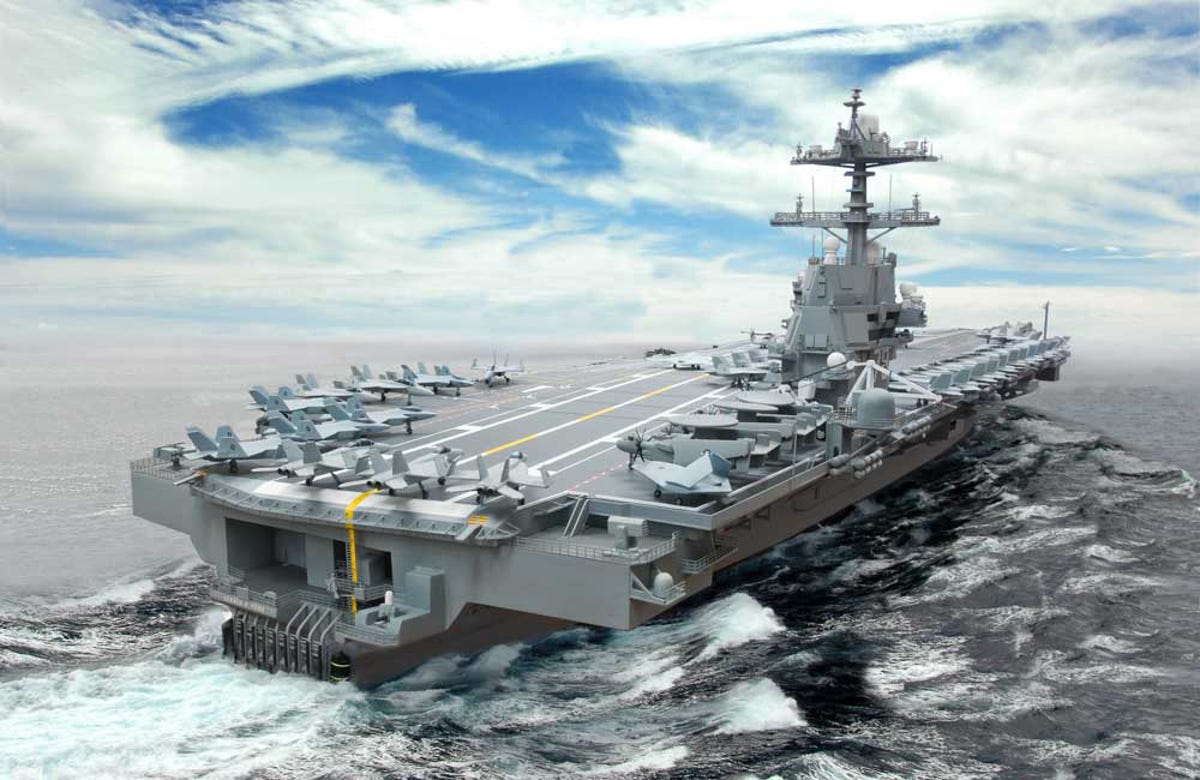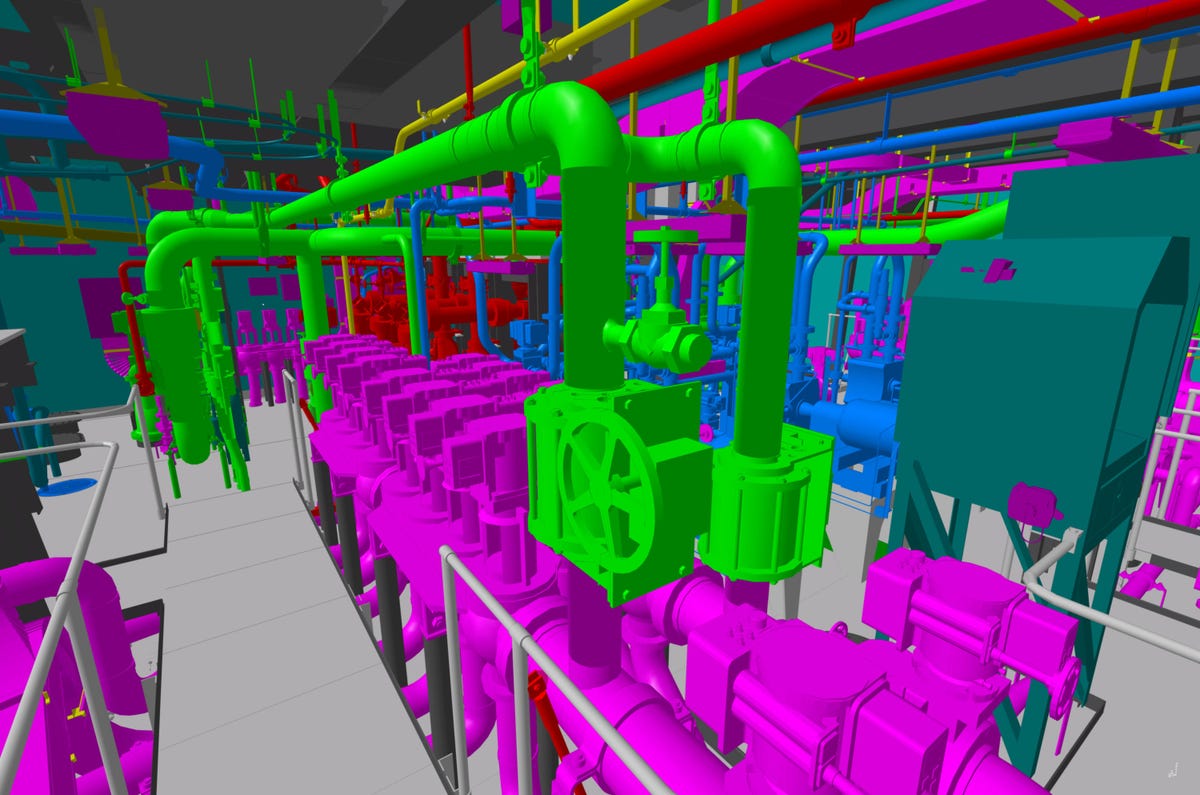Building the world's most advanced aircraft carrier (photos)
At Northrop Grumman Shipbuilding in Newport News, Va., the Gerald R. Ford is well under way. It is a sea change for carriers.

The Gerald R. Ford
NEWPORT NEWS, Va.--In September, 2015, if all goes well, Northrop Grumman Shipbuilding will deliver CVN-78, the first of a brand-new class of nuclear-powered aircraft carriers, to the U.S. Navy.
The keel for this new giant was laid in September 2009, and it is expected to move from drydock to water in July 2013. The new carrier is both named the Gerald R. Ford and is the first Gerald R. Ford class of aircraft carrier. It breaks new technological ground for the Navy because it has a new power plant design, a brand-new Electromagnetic Aircraft Launch System, and a reduced weight and flexible infrastructure enabling the addition of new technology down the line.
On Road Trip 2010, CNET reporter Daniel Terdiman stopped in at Northrop Grumman Shipbuilding here to see work on the new carrier and to get a first-hand look at some of the biggest industrial production in the world.
Rendering with schematic
This artist's rendering of the Gerald R. Ford shows some of the new features of the first-of-its-class aircraft carrier.
Superlift
These two giant sections of steel are known as a superlift. They weigh 1,000 tons, are 80 feet long, 100 feet wide, and 35 feet high. They will make up part of the lower stern of the Gerald R. Ford. Altogether, the structure of the new aircraft carrier will be made from a total of about 500 different "units," of which about 160 will be superlifts like this.
Looking into the superlift
A look into the cross-section of one of the superlifts that will be built into CVN-78, the Gerald R. Ford nuclear aircraft carrier.
Massive crane
The crane in this picture, which was at the far end of these tracks when the photo was taken--but which moves rapidly along the tracks when needed--is said to be the largest in the Western Hemisphere, weighing in at 1,050 metric tons. It was built specifically for the Northrop Grumman Shipbuilding facility in Newport News, Va.
Krupp Crane
This Krupp crane, which is also being used in the construction of the Gerald R. Ford, weighs 200 metric tons.
Big cranes from far off
This picture was taken about half a mile away from the two large cranes, providing some perspective on how large they are and the size of the shipyard.
Crane cabin
The 1,050 metric ton main crane at the Northrop Grumman Shipbuilding facility in Newport News, Va., is operated from within this tiny cabin, high up on its superstructure.
Superlift from the side
A side view of a giant section of the Gerald R. Ford.
Two superlifts
Here, we see a side view of two separate superlifts that will be built into the Gerald R. Ford.
On blocks
It's hard to imagine, but the giant sections of steel that are being worked on above the drydock are hoisted above the ground on these rudimentary blocks.
Rudder casting
This is a rudder casting, and an entire unit of the aircraft carrier will be built around it, making it a critical part of the ship.
Rudder casting and superlift
A superlift is seen next to the rudder casting in this wide-angle shot.

Pump room visualization
The Gerald R. Ford is the first-ever aircraft carrier to be constructed based on designs that were first done in a 3D collaborative visualization tool called ROVR.
What makes this software particularly useful to the Navy and to Northrop Grumman Shipbuilding is that it allows all the various stakeholders in the ship's construction--the Navy, the shipbuilders, contractors, welders, pipefitters, and so on--to examine the plans, in 3D, in advance of beginning to build the ship.
That means that it is now possible to weed out many of the design inefficiencies that have slowed previous shipbuilding projects because, for instance, one stakeholder can say to another that their piping plans won't work because they would make it impossible to pull parts out for maintenance without cutting a hole in the ceiling. In the past, that hole would most likely have had to be cut. But now, they can fix that problem in the design stage. It also offers many other benefits, and over the course of the construction of the Gerald R. Ford, is expected to save 2 million manhours of labor.
Different colors
The different colors in the ROVR images indicate different stakeholders' ownership of different elements of, in this case, the pump room. By seeing how the different systems fit together, it is possible to figure out how each system can be made to work in conjunction with the others, and avoid major inefficiencies in the final construction.
Pouring the steel
In this image, workers pour 35 tons of steel that will be used in the construction of the Gerald R. Ford.
Sections to be welded
These two giant sections of steel, which are placed carefully side by side above the drydock, will now be welded together. Once finished with that process, they will eventually be lowered into the drydock below. Much of the work is done above the drydock because it is much easier to move construction equipment around above than it is inside the drydock.
Superlift from far away
At this point, the Gerald R. Ford is only about 15 percent complete. Here, we can see one of the superlifts from about half a mile away, giving a good sense of perspective on how big the section is.
Under wraps
Under these tarps are large pieces of industrial equipment, such as air conditioners for the aircraft carrier.
Below the superlift
A look from underneath one of the superlifts gives a sense of the scale of the giant section of steel.
Rudder casting
A wide-angle view of the rudder casting.

